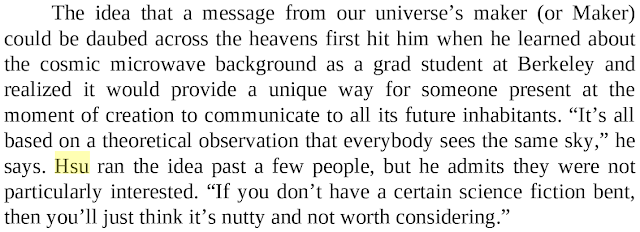Raghu Parthasarathy is the Alec and Kay Keith Professor of Physics at the University of Oregon. His research focuses on biophysics, exploring systems in which the complex interactions between individual components, such as biomolecules or cells, can give rise to simple and robust physical patterns.
Raghu is the author of a recent popular science book, So Simple a Beginning: How Four Physical Principles Shape Our Living World.
Steve and Raghu discuss:
0:00 Introduction
1:34 Early life, transition from Physics to Biophysics
20:15 So Simple a Beginning: discussion of the Four Physical Principles in the title, which govern biological systems
26:06 DNA prediction
37:46 Machine learning / causality in science
46:23 Scaling (the fourth physical principle)
54:12 Who the book is for and what high schoolers are learning in their bio and physics classes
1:05:41 Science funding, grants, running a research lab
1:09:12 Scientific careers and radical sub-optimality of the existing system
Resources:
Raghuveer Parthasarathy's lab at the University of Oregon - https://pages.uoregon.edu/raghu/
Raghuveer Parthasarathy's blog the Eighteenth Elephant - https://eighteenthelephant.com/
key holez • 2 days ago
It was a fascinating episode, and I immediately went out and ordered the book! One question that came to mind: given how much of the human genome is dedicated to complex regulatory mechanisms and not proteins as such, it seems unintuitive to me that so much of heritability seems to be additive. I would have thought that in a system with lots of complicated,messy on/off switches, small genetic differences would often lead to large phenotype differences -- but if what I've heard about polygenic prediction is right, then, empirically, assuming everything is linear seems to work just fine (outside of rare variants, maybe). Is there a clear explanation for how complex feedback patterns give rise to linearity in the end? Is it just another manifestation of the central limit theorem...?
steve hsu
This is an active area of research. It is somewhat surprising even to me how well linearity / additivity holds in human genetics. Searches for non-linear effects on complex traits have been largely unsuccessful -- i.e., in the sense that most of the variance seems to be controlled by additive effects. By now this has been investigated for large numbers of traits including major diseases, quantitive traits such as blood biomarkers, height, cognitive ability, etc.
One possible explanation is that because humans are so similar to each other, and have passed through tight evolutionary bottlenecks, *individual differences* between humans are mainly due to small additive effects, located both in regulatory and coding regions.
To genetically edit a human into a frog presumably requires many changes in loci with big nonlinear effects. However, it may be the case that almost all such genetic variants are *fixed* in the human population: what makes two individuals different from each other is mainly small additive effects.
Zooming out slightly, the implications for human genetic engineering are very positive. Vast pools of additive variance means that multiplex gene editing will not be impossibly hard...This topic is discussed further in the review article: https://arxiv.org/abs/2101.05870

















